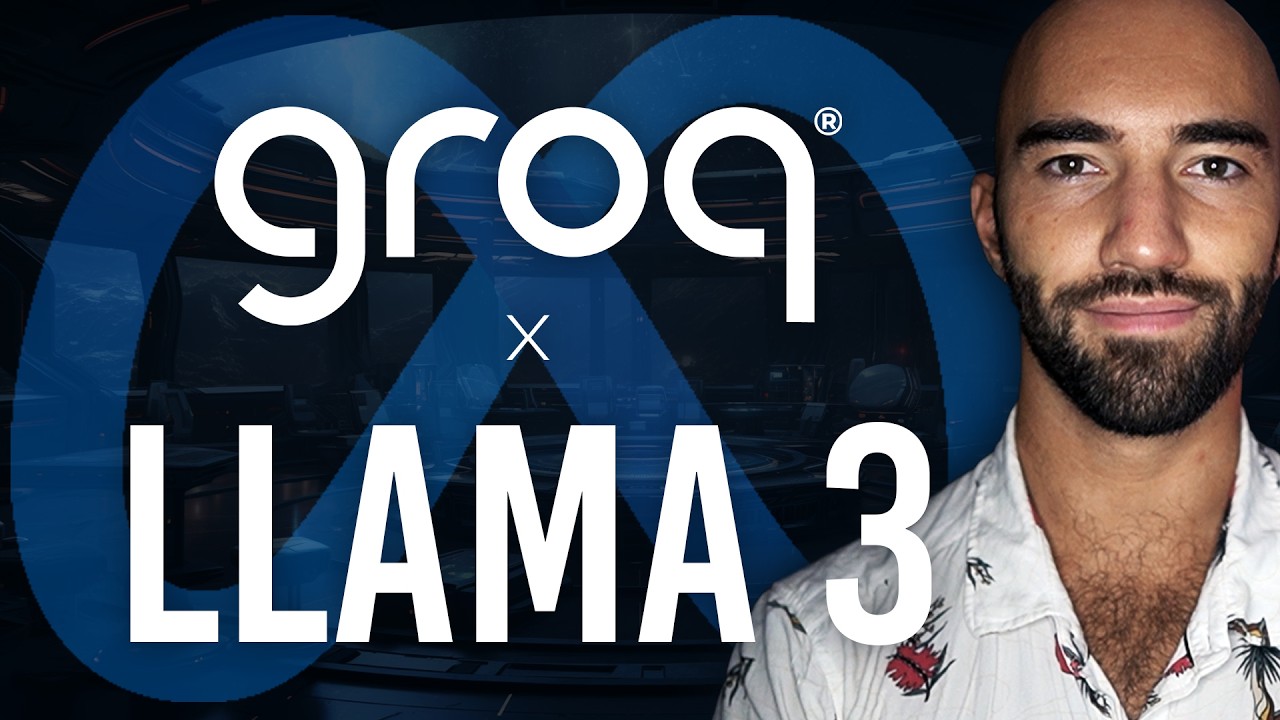The video demonstrates how to use the Gro API with Llama 3 for Rapid Automatic Generation (RAG), showcasing the integration process and its efficiency in processing large language models. By leveraging the Gro API for fast token throughput and combining it with Llama 3’s 70 billion parameter version, users can achieve quick and accurate responses for tasks like information retrieval and decision-making.
The video demonstrates how to utilize the Gro API with Llama 3 for Rapid Automatic Generation (RAG). The Gro API provides access to a Language Processing Unit (LPU) that enables fast token throughput, even for large language models like Llama 3. By accessing the code from the Panco examples repository, specifically the Gro Llama 3 RAG notebook, users can leverage the API for efficient LMS processing. The tutorial begins by installing prerequisite libraries like Hugging Face datasets, Gro API, Sematic Router, and Pine Cone for data retrieval and storage.
The presenter showcases the process of downloading a subset of the AI Archive 2 semantic chunk dataset, which contains semantically chunked AI archive papers. Each chunk includes metadata such as title and content, which are formatted for embedding using an E5 model with a longer context length of 768 tokens. The E5 model is known for its reliability and performance on both benchmarks and real-world data. The chunks are embedded and prepared for storage in Pine Cone using a serverless setup.
After setting up the Pine Cone API key and initializing the index with the appropriate settings, the embeddings are added to Pine Cone in batches, with the title and content concatenated to provide more context for the embedding model. The retrieval process is wrapped in a function that allows users to query the dataset and extract relevant metadata based on the embeddings. The presenter demonstrates a sample query about “llama llms” and retrieves papers related to llama models.
The video progresses to integrating the Gro API with Llama 3, specifically the 70 billion parameter version, to enhance the RAG process. A new function called “generate” is created to combine the original query and retrieved documents, sending them to Llama 3 via Gro for response generation. The output from Llama 3 is quick and accurate, showcasing the speed and efficiency of the integration. Users can ask various questions and receive instant responses, demonstrating the rapid processing capabilities of the combined Gro API and Llama 3 setup.
The final steps involve cleaning up by deleting the index from Pine Cone resources once the queries are completed. The presenter highlights the remarkable speed and accuracy achieved by using the Gro API with Llama 3, even with a massive 70 billion parameter model. The seamless integration of Gro with Llama 3 enables quick responses comparable to advanced models like GPT 3.5, making it a valuable tool for tasks like agent flows where rapid decision-making and information retrieval are crucial. Overall, the video provides a comprehensive guide on leveraging the Gro API and Llama 3 for efficient and effective RAG processes, showcasing the benefits of combining advanced APIs with large language models.
